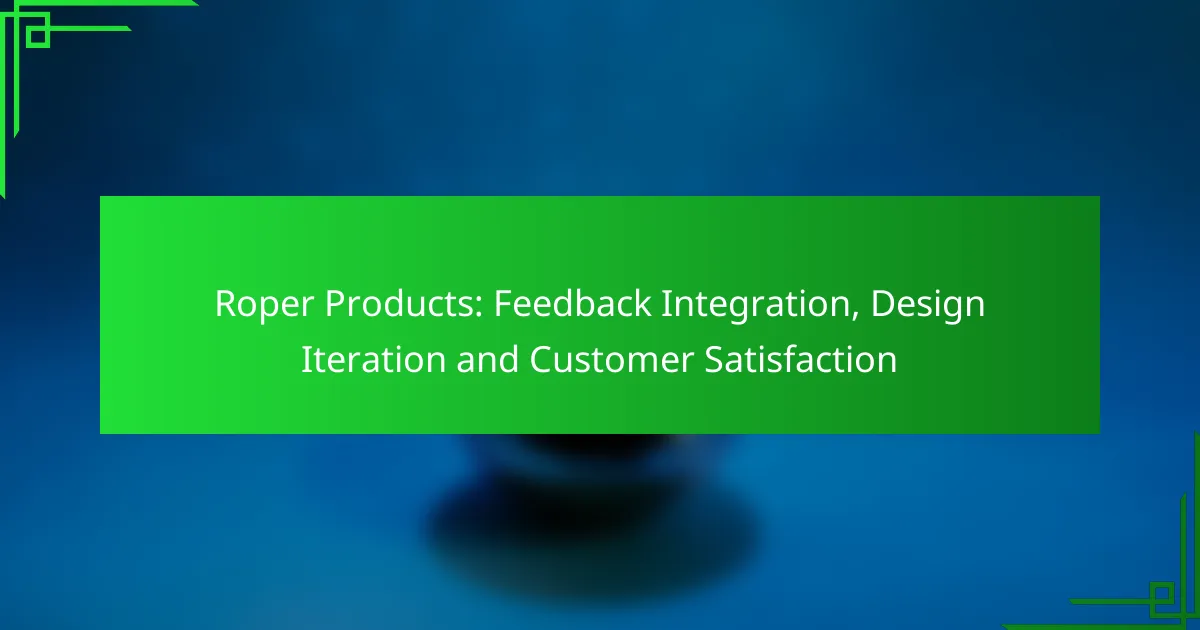Roper Products is committed to enhancing customer satisfaction by integrating feedback into their design and development processes. Through a structured approach to design iteration, they actively collect and analyze customer insights, ensuring that their products effectively meet user needs and adapt to market changes.
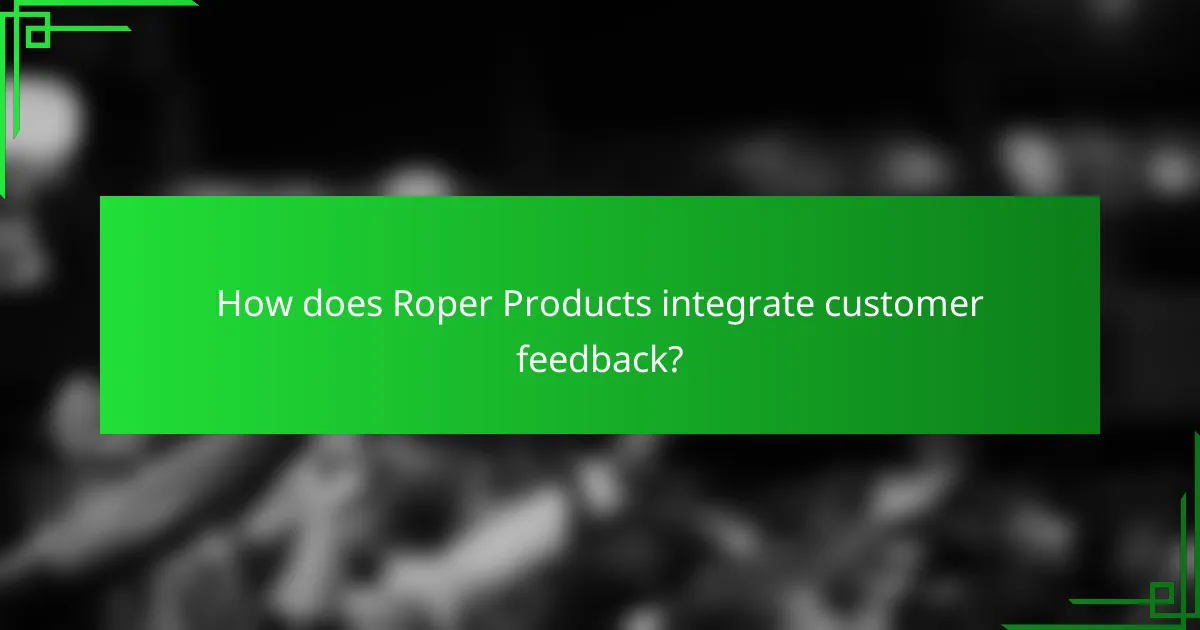
How does Roper Products integrate customer feedback?
Roper Products integrates customer feedback through a systematic approach that emphasizes continuous improvement and customer satisfaction. By actively collecting, analyzing, and implementing changes based on customer insights, Roper ensures that its products meet user needs effectively.
Feedback collection methods
Roper Products employs various feedback collection methods to gather insights from customers. These include surveys, focus groups, and direct customer interviews, which provide qualitative and quantitative data on user experiences. Additionally, online reviews and social media interactions serve as valuable sources of real-time feedback.
To enhance participation, Roper often incentivizes feedback through discounts or loyalty points, encouraging more customers to share their opinions. This multi-channel approach ensures a comprehensive understanding of customer needs and preferences.
Analysis of customer insights
Once feedback is collected, Roper Products analyzes the insights to identify trends and areas for improvement. This analysis often involves categorizing feedback into themes, such as product functionality, design preferences, and customer service experiences. By using data analytics tools, Roper can quantify customer sentiments and prioritize issues based on their frequency and impact.
Regular review meetings are held to discuss findings and ensure that all relevant departments are aligned on customer priorities. This collaborative approach helps Roper to maintain a customer-centric focus throughout the organization.
Implementation of changes
Roper Products takes actionable steps to implement changes based on customer feedback. This process typically involves product design iterations, adjustments in manufacturing processes, or enhancements in customer service protocols. Each change is carefully evaluated for feasibility and potential impact on customer satisfaction.
To track the effectiveness of implemented changes, Roper monitors customer feedback post-implementation, ensuring that the adjustments lead to improved user experiences. This ongoing cycle of feedback integration and design iteration helps Roper to remain responsive to customer needs and maintain high satisfaction levels.
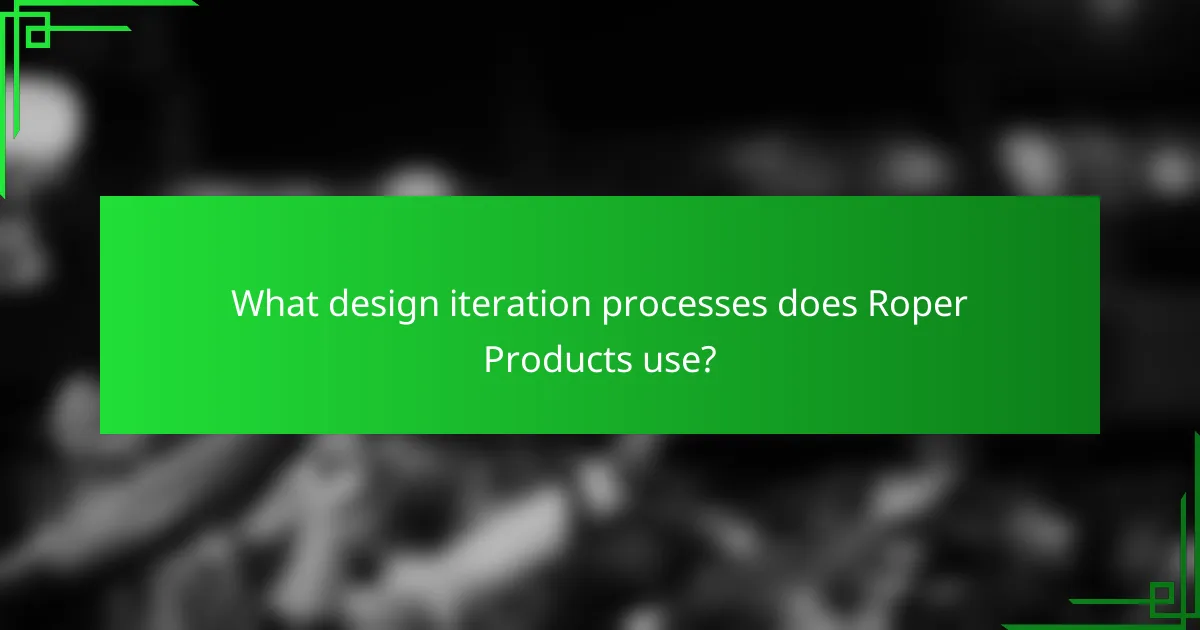
What design iteration processes does Roper Products use?
Roper Products employs a structured design iteration process that focuses on continuous improvement through feedback integration and user involvement. This approach ensures that products meet customer needs effectively while adapting to changes in market demands.
Prototyping and testing
Prototyping and testing are crucial steps in Roper Products’ design iteration process. By creating early models of products, the team can evaluate functionality and gather user feedback before final production. This iterative testing helps identify potential issues and refine designs based on real-world usage.
Typically, prototypes are developed using various materials and methods, ranging from simple sketches to advanced 3D models. Testing these prototypes allows Roper to assess usability, durability, and overall performance, ensuring that the final product aligns with customer expectations.
User-centered design approach
The user-centered design approach at Roper Products prioritizes the needs and preferences of end-users throughout the design process. This method involves engaging customers directly to gather insights and feedback, which informs design decisions and enhances product relevance.
By conducting surveys, interviews, and usability tests, Roper can better understand user behaviors and preferences. This information is then integrated into the design iterations, leading to products that are not only functional but also enjoyable to use.
Agile development methodology
Roper Products utilizes an agile development methodology to facilitate rapid design iterations and responsiveness to feedback. This approach allows teams to work in short cycles, known as sprints, where they focus on specific features or improvements based on user input.
Agile development encourages collaboration among cross-functional teams, ensuring that design, engineering, and marketing perspectives are considered. This results in a more cohesive product that can adapt quickly to changing market conditions and customer needs, ultimately enhancing customer satisfaction.
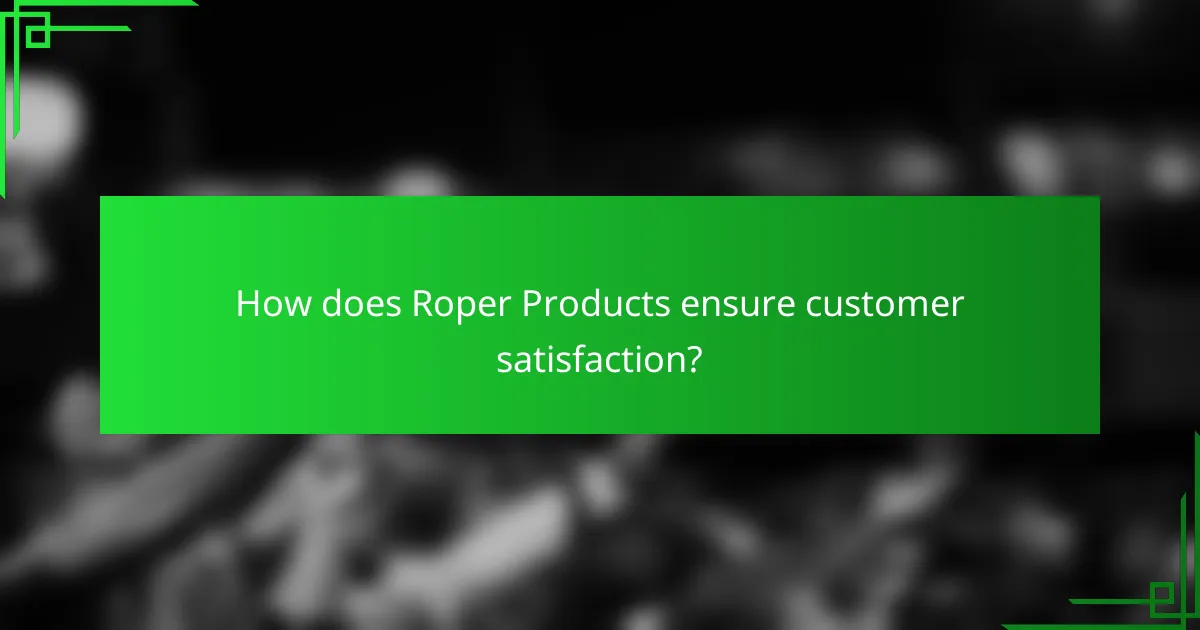
How does Roper Products ensure customer satisfaction?
Roper Products prioritizes customer satisfaction through a combination of quality assurance, responsive customer support, and feedback mechanisms. This multifaceted approach helps them meet customer needs and continuously improve their offerings.
Quality assurance protocols
Roper Products implements rigorous quality assurance protocols to ensure that all products meet high standards before reaching customers. This includes thorough testing procedures that evaluate durability, functionality, and safety, aligning with industry standards.
The company often conducts inspections at various stages of production, which helps identify potential issues early. By adhering to these protocols, Roper Products minimizes defects and enhances overall product reliability.
Customer support services
Roper Products offers comprehensive customer support services designed to assist clients with inquiries and issues. Their support team is accessible through multiple channels, including phone, email, and online chat, ensuring timely responses to customer needs.
Additionally, the company provides extensive resources, such as FAQs and product manuals, to empower customers in resolving common issues independently. This proactive approach fosters a positive customer experience and builds trust in the brand.
Post-purchase surveys
To gauge customer satisfaction, Roper Products conducts post-purchase surveys that collect valuable feedback on product performance and user experience. These surveys typically include questions about product quality, ease of use, and overall satisfaction.
The insights gained from these surveys inform design iterations and help the company address any areas for improvement. By actively seeking customer input, Roper Products demonstrates its commitment to continuous enhancement and responsiveness to consumer needs.

What are the benefits of feedback integration for Roper Products?
Feedback integration for Roper Products enhances product development by incorporating customer insights, leading to improved designs and increased satisfaction. This process not only refines product quality but also fosters stronger relationships with customers and boosts competitiveness in the market.
Improved product quality
Integrating feedback allows Roper Products to identify and address issues early in the design process, resulting in higher quality products. By analyzing customer comments and suggestions, the company can make informed adjustments that enhance functionality and durability.
For example, if customers report difficulties with a specific feature, Roper can prioritize redesigning that aspect, ensuring that the final product meets user expectations. This proactive approach minimizes costly recalls and enhances overall reliability.
Enhanced customer loyalty
When Roper Products actively seeks and implements customer feedback, it demonstrates a commitment to meeting consumer needs, which fosters loyalty. Customers are more likely to return when they feel their opinions are valued and reflected in product offerings.
Offering platforms for feedback, such as surveys or user forums, can strengthen this relationship. Engaging with customers post-purchase not only builds trust but also encourages repeat business, as satisfied customers often become brand advocates.
Increased market competitiveness
By integrating feedback, Roper Products can swiftly adapt to changing market demands, keeping them ahead of competitors. This agility allows the company to innovate and refine products in response to customer preferences, ensuring relevance in a dynamic marketplace.
Moreover, leveraging customer insights can lead to unique selling propositions that differentiate Roper’s offerings. For instance, if feedback highlights a desire for eco-friendly materials, the company can pivot to sustainable options, appealing to environmentally conscious consumers and enhancing its market position.
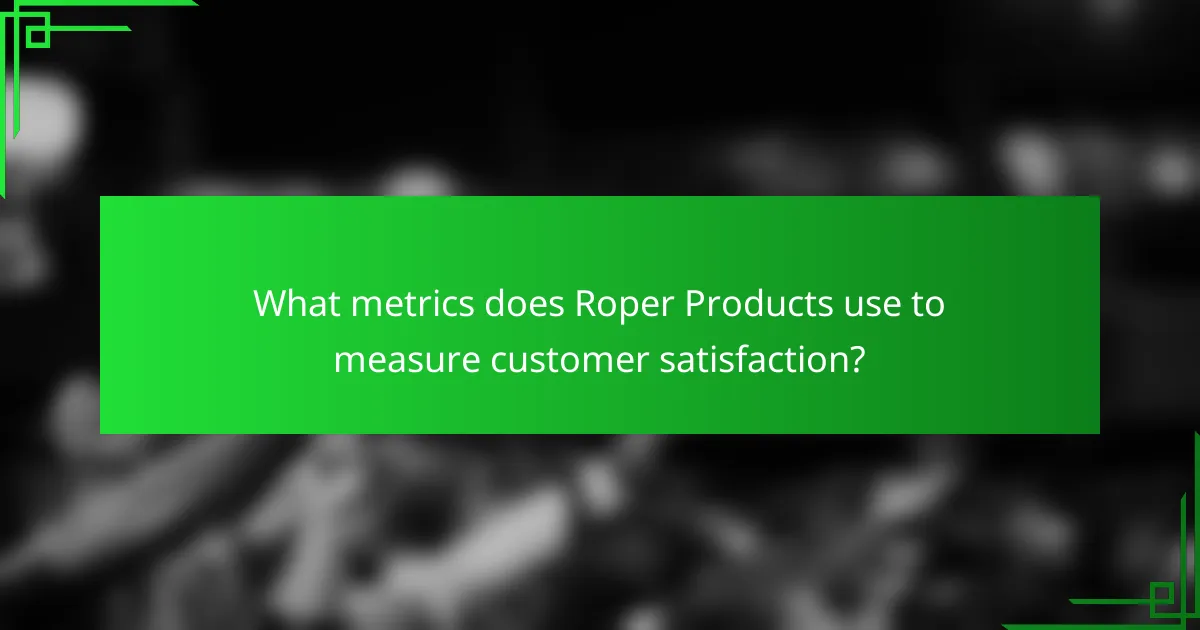
What metrics does Roper Products use to measure customer satisfaction?
Roper Products utilizes several key metrics to gauge customer satisfaction, focusing on customer feedback and engagement. These metrics include the Net Promoter Score (NPS), Customer Satisfaction Score (CSAT), and Customer Effort Score (CES), each providing unique insights into customer experiences and preferences.
Net Promoter Score (NPS)
The Net Promoter Score (NPS) measures customer loyalty by asking respondents how likely they are to recommend Roper Products to others on a scale from 0 to 10. Customers are categorized into promoters, passives, and detractors based on their scores, which helps identify overall customer sentiment.
Roper Products typically aims for an NPS in the positive range, ideally above 50, indicating a strong base of loyal customers. Regularly tracking NPS allows the company to respond to customer concerns and enhance their offerings based on feedback.
Customer Satisfaction Score (CSAT)
The Customer Satisfaction Score (CSAT) assesses how satisfied customers are with specific interactions or overall experiences with Roper Products. This metric is often gathered through surveys immediately following a purchase or service interaction, using a simple scale from 1 to 5 or 1 to 10.
Roper Products targets a CSAT score of 80% or higher, reflecting a high level of customer satisfaction. Monitoring CSAT helps the company identify areas for improvement and ensure that customer needs are being met effectively.
Customer Effort Score (CES)
The Customer Effort Score (CES) evaluates how easy it is for customers to interact with Roper Products, including purchasing and support processes. Customers rate their experience on a scale, typically from 1 to 7, indicating the level of effort required to achieve their goals.
Aiming for a low CES is crucial for Roper Products, as a lower score suggests a smoother customer experience. By analyzing CES data, the company can streamline processes and reduce friction points, ultimately enhancing customer satisfaction and loyalty.
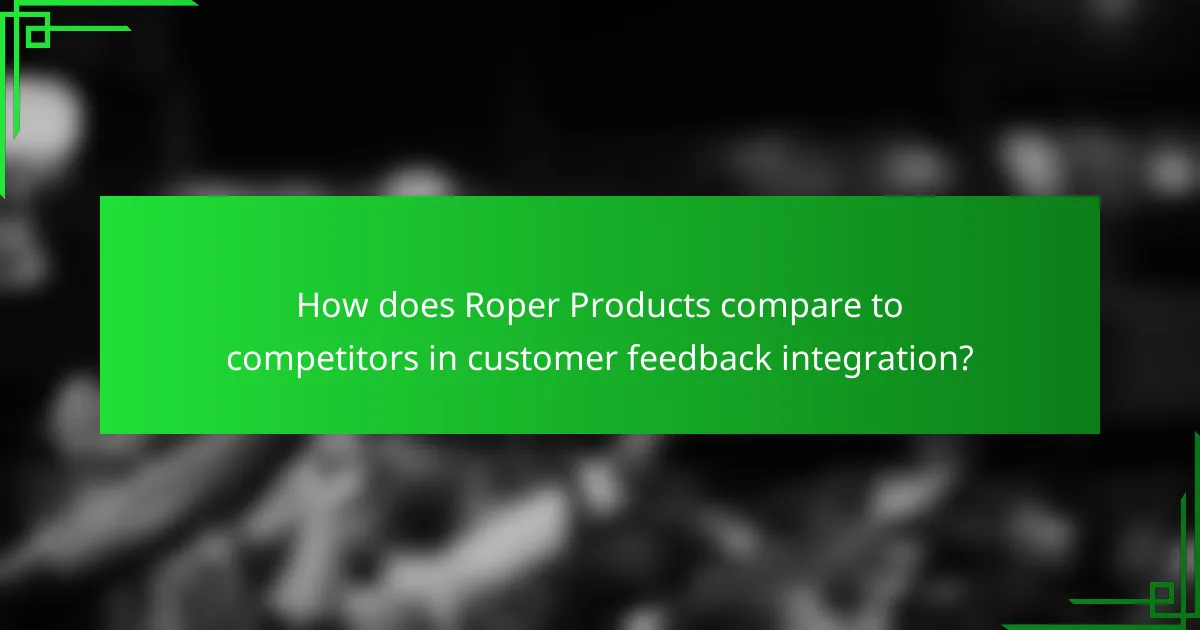
How does Roper Products compare to competitors in customer feedback integration?
Roper Products excels in customer feedback integration by actively incorporating user insights into their design processes, which enhances overall customer satisfaction. This approach allows them to adapt quickly to market demands and maintain a competitive edge.
Benchmarking against industry standards
Roper Products measures its customer feedback integration practices against established industry standards, ensuring they meet or exceed expectations. Key benchmarks include response time to feedback, the percentage of feedback implemented, and customer satisfaction scores.
For instance, leading companies typically aim for a feedback response time of under 48 hours and an implementation rate of around 30-50%. Roper Products strives to align with these metrics, often achieving similar or better results.
To effectively benchmark, Roper Products utilizes customer surveys and feedback tools, analyzing data to identify trends and areas for improvement. This proactive approach not only enhances product design but also fosters stronger customer relationships.
